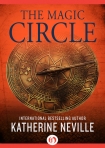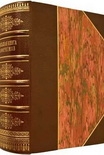The Magic Circle, Katherine Neville [parable of the sower read online .TXT] 📗

- Author: Katherine Neville
Book online «The Magic Circle, Katherine Neville [parable of the sower read online .TXT] 📗». Author Katherine Neville
THE MOTHERS
MEPHISTOPHELES:
A great mystery I’ll now unfold.
There are goddesses enthroned in solitude, sublime,
Beyond place, beyond time.
Only to think of them makes my blood run cold.
They are the Mothers!
FAUST:
The Mothers, the Mothers! It has a wonderful sound!…
How do I reach them?
MEPHISTOPHELES:
There’s no path to the unreachable, no map to the unmappable.
There are no locks, no bolts, no barriers there.
Can you envision emptiness everywhere?…
Here, take this key to sniff out the true path from all the others,
Follow it down. It will take you to the Mothers.
—Johann Wolfgang Goethe,
Faust
Who dares [to love] misery
and embrace the form of Death
,
To dance in destruction’s dance—
to
him, the Mother comes
.
—Vivekananda
My grandmother Pandora might have set things in motion by scattering the contents of that box among members of my family, but it now looked like she wasn’t the only contender in this game. It was hammered home to me that there were two mothers—Pandora and Hermione—who’d spawned all those other recipients of my grandmother’s bequest. Like the nails hammered into the Stock-im-Eisen, I felt this new axis, Hermione the pillar queen, might help tap into something too.
When it came right down to it, what did I really know about Hermione Behn, the mother of Zoe, Earnest, and Lafcadio? It mattered little whether any or all the stories I’d heard of her were true—whether, as Laf claimed, she’d been a poor Dutch orphan and later a rich South African widow or, as Wolfgang said, she was the namesake of a secret Wotanist-runic-Aryan priesthood, the Armanenschaft. So far everything about her from alpha to omega was Greek to me.
But of course, that was the one clue I’d fished from all the opinions, myths, and maybe out-and-out fictions I’d been fed these past few days—the very clue Hitler himself might have been hunting for here at the monastery of Melk. If Hermione connoted ‘axis’ in Greek, and if there was really some geographical connection to mythology as everyone seemed to think, then the important Hermione—the Hermione I should be looking for—wasn’t likely to be found in a phone book, a family album, or a history of early Germanic tribes. It had to be found on a map.
When Wolfgang and I came into the library’s entrance hall, I saw it at once: On the far wall, beneath a slab of glass, was a hand-tinted antique map of Europe written in medieval Germanic script. With Wolfgang, I went over and stood before it. Had it been here seventy-five years ago when the young Adolf Hitler walked through these doors?
The typed legend on the wall said, in German, French, and English, that it was from the ninth century, the time of Charlemagne, and depicted important religious sites throughout Europe—churches, shrines, and sanctuaries established since the beginning of the Christian era. Since a Greek name like Hermione seemed to point to a Greek location, it took only a quick scan to find it.
Hermione was a seaport on the southeast coast of the Peloponnesus. On this map, a Christian church was marked there with a tiny cross and a first-century date. Interestingly, it was surrounded by four other marked sites that were identified with the sun god Apollo. So what had clearly been an important pagan site may have been converted, as Dacian Bassarides described yesterday, from worship of a prior aeon’s gods to those of a new one. If his idea was right, holy sites of the age of Aries would now be replaced with sites of the new age that had just been dawning two thousand years ago: Pisces, fisher of men, and his mother Virgo, the celestial Virgin.
If Hermione represented an axis on the world grid even before Christianity, it should be connected with earlier pagan sites bearing symbols like Aries the ram and Taurus the bull. Hermione was situated facing Crete, where an earlier culture, the Minoan, coexistent with Egypt, had once flourished. I traced a line from Hermione to Crete, where Zeus, father of the gods, was nursed on Mount Ida by the she-goat Amaltheia—a goat whose image Zeus later fondly set among the stars as another constellation: Capricorn. But I knew there was another god whose worship in the form of a bull had been equally influential on Crete, the very god Uncle Laf had assured me I’d know when to call on in time of need: Dionysus.
Given all this, when I traced the Crete-Hermione axis toward the northwest, as Wolfgang looked on, I found it more than interesting that it ran smack into the heart of the most powerful religious site of ancient times, a site shared by two great gods: Apollo in summer and Dionysus during the long, dark winter months until the sun made its return from the land of the dead. That site, of course, was Delphi.
Here was the python-inspired prophetess, the Pythian, the Delphic oracle. For thousands of years, these successive oracular mouthpieces of Apollo had foretold events and prescribed actions the Greeks had adhered to religiously. No ancient writer doubted that the Delphic oracle could see the interconnected web of time comprising past, present, and future. So a site like Hermione, connecting places as important as Delphi and Cretan Ida, may well have been the axis.
I drew an invisible X with my finger across the axis, making a six-pointed asterisk, a Hagal rune like the one Wolfgang had drawn earlier in the air.
At this point, it seemed far from coincidental that the first line passed through Eleusis, home of the Eleusinian Mysteries, continuing to the Macedonian peninsula where Mount Athos projects into the Aegean—a site plastered here on the map with dozens of tiny crosses. A famous group of twenty monasteries built by the emperor Theodosius, patron of Saint Hieronymus, Athos was once a major repository of ancient manuscripts repeatedly looted by the Turks and Slavs in innumerable Balkan wars. Its unusual location, equidistant from Mount Olympus on the Greek mainland and Troy on the Turkish, was visible from each. Perhaps Athos itself was yet another





Comments (0)